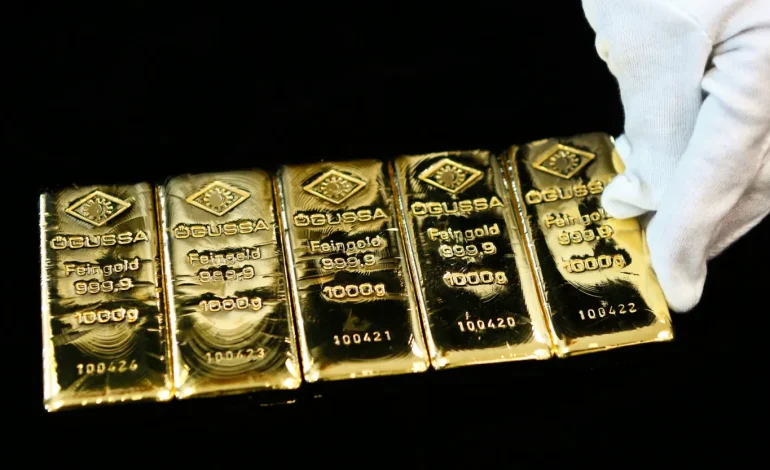Global financial markets are navigating a wave of uncertainty as US President Donald Trump’s latest tariff moves create ripple effects across various sectors.
On Tuesday, gold prices soared to a record high of just above $2,935 an ounce, driven by investor demand for safe-haven assets. Meanwhile, stocks remained resilient, buoyed by gains in the energy and technology sectors despite ongoing trade concerns.
Despite the tariff tensions, Wall Street closed higher, with the S&P 500 materials index rising 0.5%, supported by strong performances from US steel companies like Nucor and Steel Dynamics, which gained 5.6% and 4.9%, respectively. Positive quarterly results from companies such as McDonald’s also lifted market sentiment.
In Asia, Hong Kong’s Hang Seng index climbed to a four-month peak, continuing its 12% rally over the past month. Investors seem to believe that Trump’s approach, which has included both imposing and suspending tariffs, leaves room for potential negotiations.
Europe’s STOXX 600 index also rose by 0.58%, hitting a record high as energy stocks surged alongside rising oil prices.
Gold’s meteoric rise has been a key story in global markets. Bullion has now gained nearly 12% this year as investors seek refuge from trade uncertainties and potential inflation pressures. The possibility of tariffs fueling inflation has heightened interest in gold, a traditional hedge against rising prices.
Analysts are eyeing the symbolic $3,000 per ounce milestone, with several banks, including Citigroup, forecasting that gold could reach that level within three months if trade tensions persist.
The dollar remained firm, trading at 152.01 yen and $1.03 per euro, while the Chinese yuan weakened past the 7.3 per dollar mark. The Canadian dollar and Mexican peso faced pressure as both countries were directly impacted by Trump’s metal tariffs.
Oil prices held onto sharp gains from the previous session as colder weather in Europe drove gas demand higher.
As markets digest Trump’s trade policy decisions, all eyes are on Federal Reserve Chair Jerome Powell, who is set to deliver his semiannual monetary policy testimony to Congress. Powell’s comments on tariffs and inflation will be closely watched for insights into the Fed’s future rate decisions.
Current expectations are for the Fed to hold rates steady at its March meeting, although uncertainty surrounding the impact of tariffs could influence the timing of future cuts.








